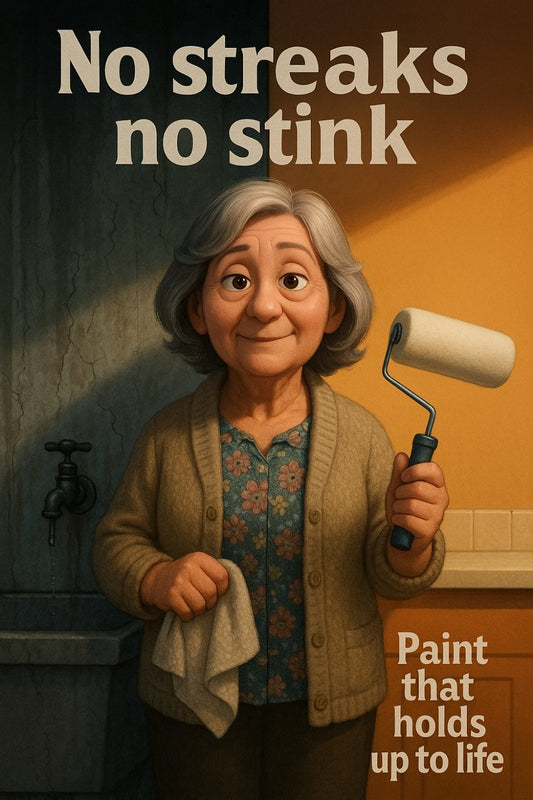
Blending Techniques for Gradient Wall Murals
Share
How to Blend a Perfect Gradient for Eye-Catching Wall Murals
We've all seen those dreamy walls that effortlessly shift from one colour to another, creating an incredible gradient effect. It's the kind of feature that makes a room pop, adding depth, warmth, and a designer's touch without the need for expensive wallpaper or artwork. But how do you get that smooth, flowing transition without the dreaded patchy brushstrokes? Let’s break it down.
Choose the Right Colours
The key to a great gradient is picking hues that blend well. Whether you want soft pastels soothing the space or bold shades making a statement, select colours that sit close to each other on the colour wheel. A sudden jump from deep navy to lemon yellow will be tricky to blend. But a shift from a warm blush to a soft peach? Much easier on the eyes and the brush.
Start with a Quality Basecoat
Before you lift a blending brush, make sure the wall is prepped with a quality undercoat like Haymes Ultra Premium Prepcoat Sealer. This ensures your surface is smooth and absorbent enough for the gradient effect to take hold properly. Let it dry fully before jumping into the colour work.
Work in Sections
Rather than painting the whole wall at once, focus on small sections. Keeping the paint fresh while working on adjacent areas allows for better blending before it dries. This is where a good roller and quality brush come into play for smooth application.
Use a Dry Brush for Seamless Blending
Here’s the magic trick: take a dry, wide paintbrush and lightly go over the area where the colours meet. This softens harsh lines and helps feather out the transition. Flicking the brush in soft, criss-cross strokes will create a flawless blend.
Spray Misting for a Soft Finish
For an extra seamless look, lightly mist the freshly painted area with water using a fine spray bottle. This keeps the paint wet a little longer, giving you more time to blend before it sets. Just don’t oversaturate the wall – a subtle mist is all you need.
Feathering with a Sponge
Want a super soft gradient? Grab a clean, slightly damp sponge and dab along the blending area in gentle circular motions. This helps buff out the transition even further without harsh brushstrokes.
Use the Right Paint for the Job
Not all paints are created equal, and for blending, the right texture makes a world of difference. Haymes Ultra Premium Expressions Low Sheen is an excellent choice, offering smooth application and easy blending before drying.
Layer in Thin Coats
A good blended wall isn’t achieved in a single pass. Work in thin layers, gradually building the transition. This prevents chunky colour shifts and keeps everything looking natural.
Stand Back and Assess
Step away from the wall every so often to assess your progress from a distance. This helps spot any uneven areas and allows for small touch-ups before the paint sets.
Seal the Work
Once you're happy with the blend and it's completely dry, a final seal with a durable finish like Haymes Ultra Premium Interior Paint helps protect the wall. This ensures your masterpiece stays fresh and vibrant for years to come.
There you go – perfect gradients without the stress! Whether you're adding a subtle ombré to a nursery or going bold in your living space, these techniques will have you blending like a pro. Happy painting! 🎨
Cheers,
Candeece

Stay Connected
Follow our Facebook Page: Strathalbyn H Hardware on Facebook



